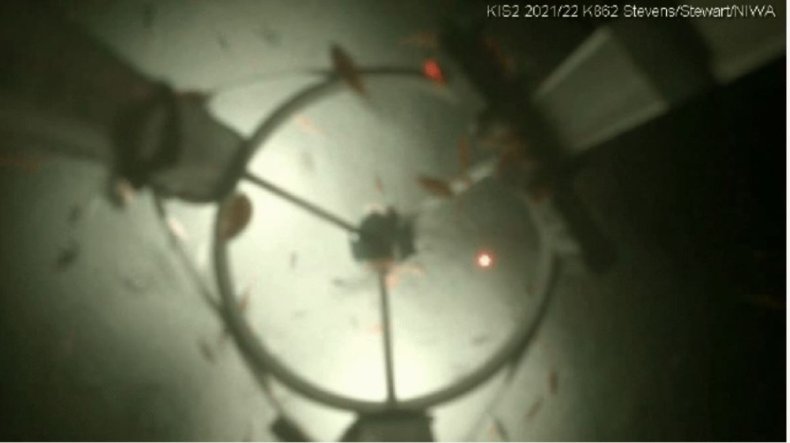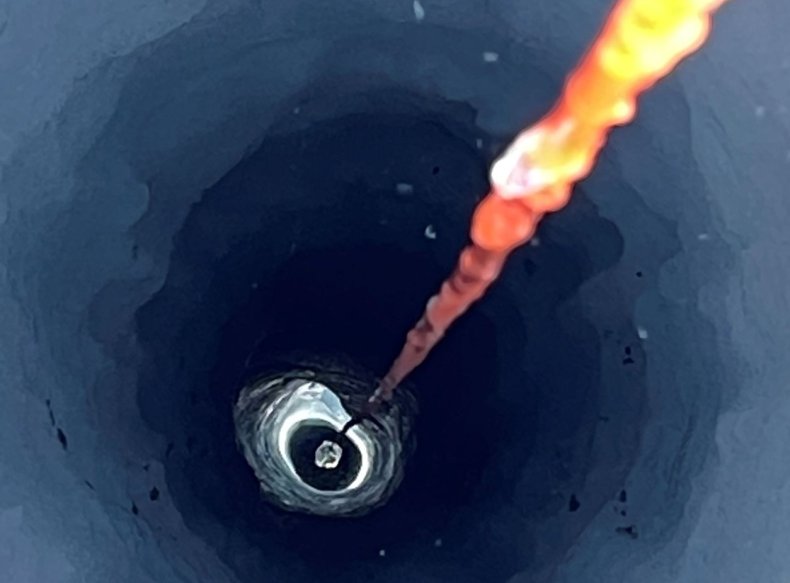Swarms of crab-like creatures have been found in a river 1,600 feet beneath the ice in Antarctica.
The discovery was a surprise to a team of New Zealand researchers, who were in Antarctica to study a river, hundreds of kilometers from the edge of the Ross Ice Shelf, to see how it is impacted by the changing climate.
As the scientists drilled down into the river with a camera, they unexpectedly discovered swarms of the small amphipods, according to a press release—a creature in the same family as crabs, mites and lobsters.
Professor Craig Stevens, a NIWA Physical Oceanographer taking part in the expedition, said in a press release that it was a "big surprise."
"For a while, we thought something was wrong with the camera but when the focus improved, we noticed a swarm of arthropods around 5mm in size," he said. "We were jumping up and down because having all those animals swimming around our equipment means that there's clearly an important ecosystem there. We've taken some water samples back to the lab to look at the DNA and other properties of the water to see what makes it unique, as we were observing something not seen in other systems close by."

Scientists have long been aware of freshwater lakes and rivers underneath the Antarctic ice. However, this is the first time one of those lakes or rivers, and the wildlife living within them, have been directly observed.
Project lead Huw Horgan, an associate Professor of geophysical glaciology at the Antarctic Research Center at Victoria University of Wellington, was the one to first spot the ecosystem during the trip. While studying the satellite imagery of the ice shelf, he noticed a groove in the ice—an indicator that an estuary was under the ice.
Horgan said what they found was a "cathedral-like cavern, teeming with life." He said being the first to observe such a thing was "like being the first to enter a hidden world."
"It was an incredibly exciting expedition because of the rare opportunity it offered to study this type of environment. We've left instruments there that should provide observations for years to come," he said. "This will tell us about the water flow, temperature and pressure at two-minute intervals so we can get a good picture of how the river behaves and how it interacts with the ocean and ice sheet."
Dr. Richard Levy from GNS Science and Victoria University of Wellington said that "it's discoveries like these" that show how much there is still to learn about Antarctica.
Since the continent's ice sheets "have a massive influence on sea level," Levy said researchers will now work to study what impacts they will have in the future.
The same group of researchers had recently wrapped up an expedition to Hunga Tonga, an underwater volcano that recently erupted.


